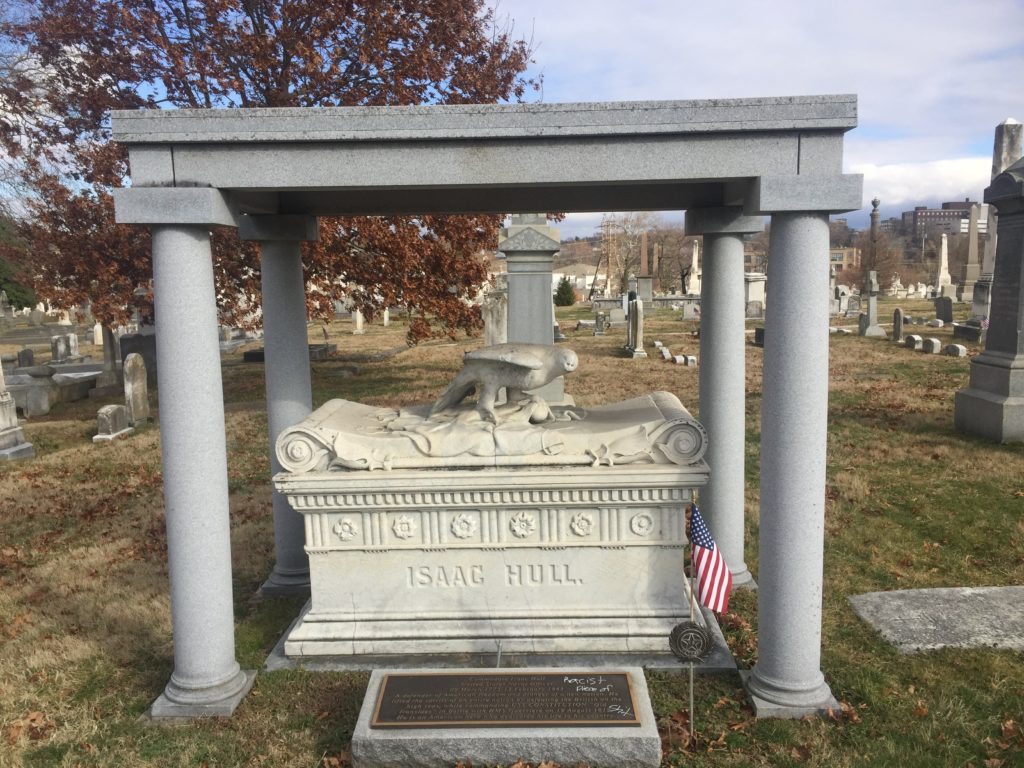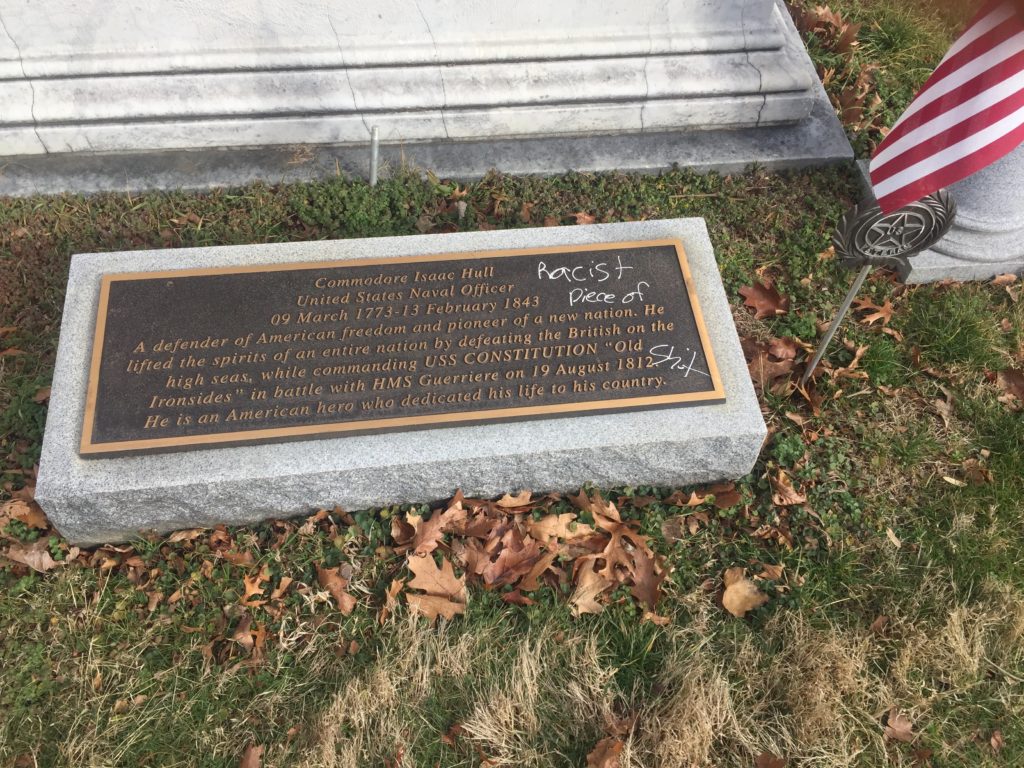Erik Visits an American Grave, Part 692
This is the grave of Isaac Hull.

Born in 1773 in Derby, Connecticut, Hull grew up on the water. His father was a ship captain trading in the West Indies and his young son went along with him from a fairly young age. The father died when Isaac was still a kid and he lived with his uncle. But at the age of 14, he shipped out as a common sailor on a ship. But he was really good at his job and was a captain of his own ship by the late 1790s. With few good sailors in the very small Navy, someone like Hull was a valuable commodity for the young nation. And so Hull was commissioned as a lieutenant in the Navy in 1798.
Hull became second in command to Captain Silas Talbot on the USS Constitution fighting in the quasi-war against France in the later Adams years. He was a fast student of the Navy. Soon he was commanding his own ships in the Barbary Wars, when the U.S. took the rather silly position of fighting the North African pirates instead of just paying them off like the Europeans did. By 1809, he commanded the USS Chesapeake. He became obsessed by deserting sailors, which was a huge problem since conditions on the ships were basically horrible. The punitive measures he took…did not help.
Anyway, by the time of the War of 1812, Hull was one of the top naval officers in the U.S. Now commanding the Constitution, he had a big early victory in a naval battle against the HMS Guerriere in which he ordered his sailors to hold their fire, despite being fired upon by the British, until they were very close, and then to unload. And they did. The U.S. lost 7 dead and 7 wounded. The British suffered 15 dead, 78 wounded (including the ship’s commander), and 257 taken prisoner. This was a critical victory for the underdog nation fighting the world’s greatest power.
Oddly, Hull was somewhat sidelined for the rest of the war. He was given the command of the Portsmouth Naval Yard in Kittery, Maine. This placed him in charge of constructing new ships, which was of course important, but less glamorous than fighting. After the war, Hull served on the Board of Navy Commissioners from 1815 to 1817, which existed to modernize the nation’s Navy. He then had a somewhat disastrous run heading the Charlestown Navy Yard, where his tenure was marred by administrative incompetence. He commanded the Pacific Squadron between 1823 and 1827 and then was named Commandant of the Washington Naval Yard in 1829. He stayed in that role until 1835. He once again struggled to administer this unwieldy group of workers, though was given praise from some Black workers for helping securing the wife and children of one worker from a slave dealer. But in 1835, when he tried to reduce workers’ lunch break, they went on strike. He did this after he found out they were stealing government property. But like so many strikes of the 19th century, this was also white resentment against Black workers being hired and there was violence against that community on in the yard and in nearby neighborhoods. This is probably the worst moment in the history of the Washington Navy Yard. It also led to Hull leaving his post.
You’d think Hull would have retired by this time, but between 1839 and 1841, he commanded the USS Ohio. He never officially retired, but ill health forced a leave of absence. He died in 1843 at the age of 69.
Now, you may have noticed some modern writing on Hull’s grave. Here it is:

I have no principled objection to modern people defacing monuments of terrible people. But while I can believe that Hull was a racist piece of shit, I can’t actually find any evidence for it. Having never actually seen anything like this in a cemetery before, I was curious as to why Hull. But I haven’t found anything so far. Some of you who have more time than I do might figure it out. This dissertation does demonstrate the Hull used racial epithets, but while actually praising Black sailors as superb fighters. Hull was a slaveowner as well, but he freed his slave in 1835 and said slave joined the Navy. So this isn’t a lot, compared to the rest of the early 19th century.
Isaac Hull is buried in Laurel Hill Cemetery, Philadelphia, Pennsylvania.
This grave visit was sponsored by LGM readers. Thanks again! If you would like this series to visit other War of 1812 naval officers, you can donate to cover the required expenses here. William Bainbridge is also in Philadelphia and Joshua Barney is in Pittsburgh. Previous posts in this series are archived here.


